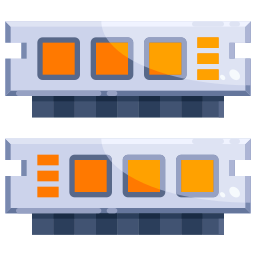
Understanding Patch Panels in Network Hardware Components
A patch panel is a crucial piece of hardware used in network infrastructure to organize and manage multiple network cables in a clean, efficient, and scalable manner. Commonly installed in data centers, telecommunications rooms, and server closets, patch panels are designed to serve as a central point where incoming and outgoing cables from different network devices meet. This hardware component does not actively process data but functions as a passive organizing and routing tool, providing an essential foundation for structured cabling systems.
Structure and Function of a Patch Panel
A patch panel typically consists of a flat metal or plastic board that houses multiple ports or jacks. Ethernet cables coming from various locations such as computers, printers, IP phones, access points, and other network devices are terminated into the back of the panel using punch-down tools. The front of the panel contains ports that allow patch cords to be connected to network switches, routers, or other equipment.
Patch panels are most commonly used with twisted-pair copper cables like Cat5e, Cat6, or Cat6a, but they are also available for fiber optic cables in enterprise-level installations. Each port on a patch panel represents a fixed connection point for a device on the network, and through short patch cords, connections can be rerouted or changed without having to directly access the bulk cabling infrastructure.
Applications and Use Cases
Centralizing and organizing multiple Ethernet connections in a structured cabling system
Providing easy access for testing, diagnosing, or troubleshooting network connections
Simplifying the management of changes, upgrades, or rerouting in the network layout
Enhancing cable management by reducing clutter and physical strain on cables
Reducing the risk of cable damage caused by frequent unplugging and replugging
Supporting large-scale network environments such as corporate offices, data centers, and educational institutions
Allowing for a scalable and professional installation that can grow with network demands
Types of Patch Panels
Copper patch panels: Designed for twisted-pair Ethernet cables (Cat5e, Cat6, Cat6a), used in most LAN environments
Fiber optic patch panels: Used in high-performance networks requiring high bandwidth and long-distance transmission
Loaded vs. unloaded patch panels: Loaded panels come pre-installed with jacks, while unloaded panels allow custom configuration
Wall-mounted or rack-mounted panels: Chosen based on the available space and size of the network infrastructure
Cost and Accessibility
Patch panels are not free to use. They are physical hardware devices that need to be purchased and installed as part of a network setup. The cost varies depending on the number of ports, quality of materials, brand, and type (copper or fiber). For small networks, a basic patch panel can be relatively inexpensive, while enterprise-grade patch panels with higher port density and enhanced features may cost more. However, the long-term value provided by patch panels in terms of organization, maintenance, and scalability often outweighs the initial expense.
Comparison with Direct Connections
When building a network without a patch panel, cables run directly from devices to the switch or router. While this may seem simpler at first, it introduces significant limitations:
Lack of flexibility in making changes to the network layout
Increased risk of damaging cables during frequent reconfiguration
Higher difficulty in managing and identifying individual cables
Poor aesthetics and cluttered cabling, especially in larger setups
Using a patch panel adds an extra layer of structure that allows for faster and cleaner reconfigurations, easier troubleshooting, and a more professional appearance. It separates the permanent cabling infrastructure from the movable, user-facing parts of the network.
Maintenance and Usability
Once installed, patch panels require minimal maintenance. The main tasks include ensuring that cables remain securely connected, ports are properly labeled, and patch cords are in good condition. Technicians can quickly reroute connections, test faulty lines, or expand the system without disrupting the main infrastructure. This results in reduced downtime and better control over network performance.
Scalability and Long-Term Benefits
Patch panels are highly scalable. In a growing organization, new devices can be easily added to the existing system without the need to run new cables through walls or ceilings. As the number of users and devices increases, a patch panel makes it possible to expand the network logically and efficiently. For IT teams, this means better resource management and less time spent on maintenance tasks.
Conclusion
Patch panels play a vital role in any structured cabling system. While they do not actively participate in the transmission of data, their contribution to network organization, flexibility, and scalability is invaluable. By centralizing all cable terminations in one accessible location, patch panels simplify network management, reduce maintenance time, and improve the overall reliability of the infrastructure. Though their use involves an initial investment, the long-term efficiency, professionalism, and ease of use they bring make them a practical and often necessary component in both small and large-scale network environments.












